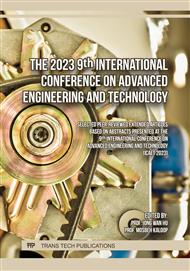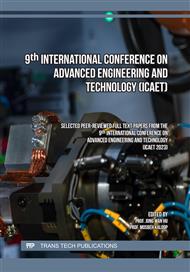p.3
p.11
p.19
p.27
p.33
p.45
p.53
Design of a Rainwater-Based Power Plant Turbine
Abstract:
The increase in the use of electricity in Indonesia is also due to the industrial sectors which have enlarged their area and the use of electricity to develop their business. Indonesia is a developing country which is still in the stage of development and development so that it can become a developed country. This research is main to develop rainwater based power plant turbine and anaysis the stress analysis and test the rig. Simulation of stress analysis in the design of a water turbine, there is 1 force that is applied, namely the force in the area where the gallon water container with a volume of 15 liters is placed. The force exerted is 147.1 N which is obtained from calculating the mass of a gallon filled with 15-liters of water multiplied by the acting gravitational force. The results of the stress analysis simulation show a visualization image consisting of von mises stress, displacement, and the safety factor displays blue for all parts of the water turbine frame design which states that the amount of force exerted is still relatively safe. Water discharge is taken using a digital water sensor that can detect the water flow rate accurately. Water power of this system is 1.14 Watt. The water pressure generated by the fluid mechanical energy working in the water turbine is directly proportional to the resulting blade of turbine rotation. The voltage comparison resulting from the number of blade design states that the most optimal design is in the number of 8 blades, which has the greatest voltage value of 910.1 V at the 181 rpm. Hence, the number of 8 blades is the most effective turbine design for rotating the generator.
Info:
Periodical:
Pages:
19-25
Citation:
Online since:
February 2024
Keywords:
Price:
Сopyright:
© 2024 Trans Tech Publications Ltd. All Rights Reserved
Share:
Citation:



